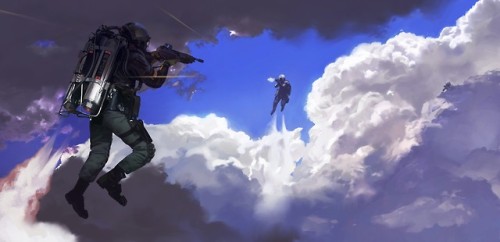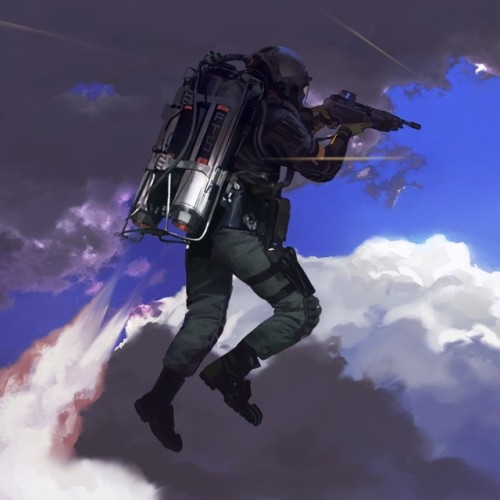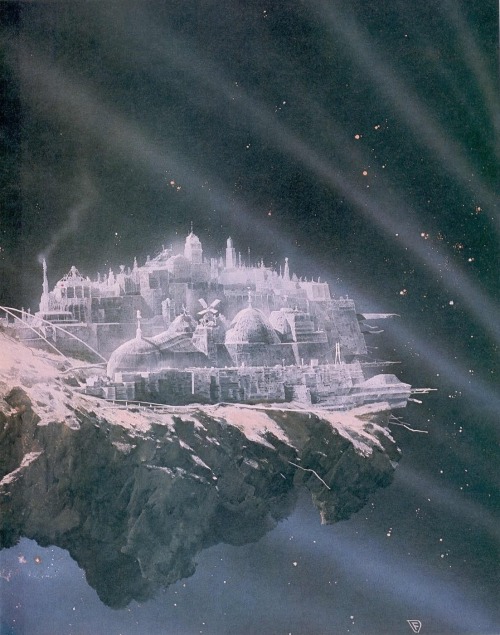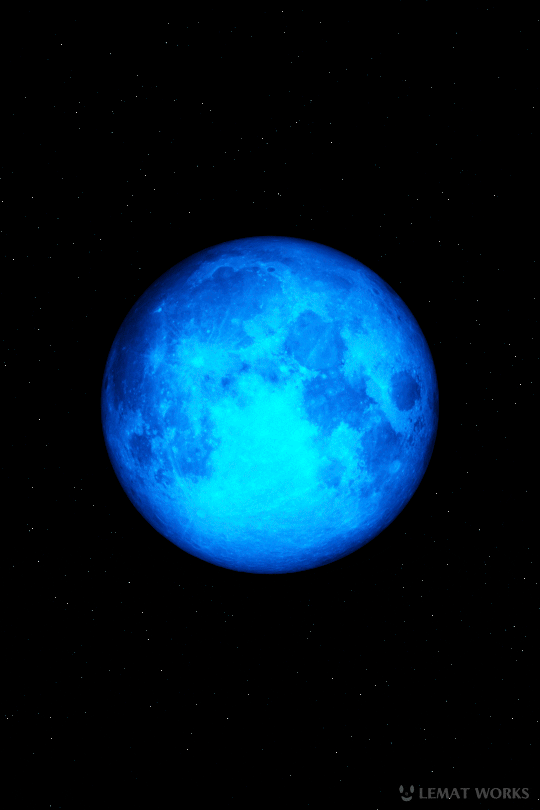LUNAR CHRISTMAS – On December 24, 1968, The Astronauts Of Apollo 8 Became The First Humans To Orbit










LUNAR CHRISTMAS – On December 24, 1968, the astronauts of Apollo 8 became the first humans to orbit the Moon. They captured this sequence of amazing images along the way. (NASA)
More Posts from Epic-flight and Others



Jet pack - Faraz Shanyar

Starbright.
Twitter / Instagram / Gumroad / Patreon
KnownOrigin / SuperRare / OBJKT /Zedge

Space shuttle re-entry.

NGC 3314: When Galaxies Overlap : Why doesn’t the nearby galaxy create a gravitational lensing effect on the background galaxy? It does, but since both galaxies are so nearby, the angular shift is much smaller than the angular sizes of the galaxies themselves. The featured Hubble image of NGC 3314 shows two large spiral galaxies which happen to line up exactly. The foreground spiral NGC 3314a appears nearly face-on with its pinwheel shape defined by young bright star clusters. Against the glow of the background galaxy NGC 3314b, though, dark swirling lanes of interstellar dust can also be seen tracing the nearer spiral’s structure. Both galaxies appear on the edge of the Hydra Cluster of Galaxies, a cluster that is about 200 million light years away. Gravitational lens distortions are much easier to see when the lensing galaxy is smaller and further away. Then, the background galaxy may even be distorted into a ring around the nearer. Fast gravitational lens flashes due to stars in the foreground galaxy momentarily magnifying the light from stars in the background galaxy might one day be visible in future observing campaigns with high-resolution telescopes. via NASA

Chris Foss

The Lively Center of the Lagoon Nebula : The center of the Lagoon Nebula is a whirlwind of spectacular star formation. Visible near the image center, at least two long funnel-shaped clouds, each roughly half a light-year long, have been formed by extreme stellar winds and intense energetic starlight. A tremendously bright nearby star, Herschel 36, lights the area. Vast walls of dust hide and redden other hot young stars. As energy from these stars pours into the cool dust and gas, large temperature differences in adjoining regions can be created generating shearing winds which may cause the funnels. This picture, spanning about 10 light years, combines images taken in six colors by the orbiting Hubble Space Telescope. The Lagoon Nebula, also known as M8, lies about 5000 light years distant toward the constellation of the Archer (Sagittarius). via NASA

A crater on Mars, observed by the Mars Reconnaissance Orbiter: “This impact crater appears relatively recent as it has a sharp rim and well-preserved ejecta, the material thrown out of the crater when a meteorite hit Mars. The steep inner slopes are carved by gullies and include possible recurring slope lineae (known as RSL) on the equator-facing slopes. RSL could be a sign that water, its freezing point lowered by a high concentration of salt, could be seeping down these steep slopes. MRO has seen RSL appear in warmer seasons and disappear in cooler seasons in a few locations on Mars, indicating a planet with plenty of active processes.” (NASA)

John Berkey cover art for The Plain Truth, April 1978.

🌕 Lemat Moon 1 2 3 4 5 6 7 8 9 10 11 12 13🌗 Twinkle Night27 3 17 / instagram / Adobe Behance🌑✨
-
 lostinspaceage82 liked this · 2 years ago
lostinspaceage82 liked this · 2 years ago -
 joaquiino liked this · 2 years ago
joaquiino liked this · 2 years ago -
 reptil-enjoyer reblogged this · 2 years ago
reptil-enjoyer reblogged this · 2 years ago -
 ladydianaphotos liked this · 2 years ago
ladydianaphotos liked this · 2 years ago -
 houseofwindsorfan reblogged this · 2 years ago
houseofwindsorfan reblogged this · 2 years ago -
 fdarnall reblogged this · 2 years ago
fdarnall reblogged this · 2 years ago -
 magicalsheepconnoisseur liked this · 3 years ago
magicalsheepconnoisseur liked this · 3 years ago -
 astor-leo reblogged this · 3 years ago
astor-leo reblogged this · 3 years ago -
 flora-the-philomath liked this · 3 years ago
flora-the-philomath liked this · 3 years ago -
 marcorel0779 liked this · 3 years ago
marcorel0779 liked this · 3 years ago -
 thegirlnoonetexts liked this · 3 years ago
thegirlnoonetexts liked this · 3 years ago -
 jillianschufrau reblogged this · 3 years ago
jillianschufrau reblogged this · 3 years ago -
 zm4ms liked this · 3 years ago
zm4ms liked this · 3 years ago -
 planetsconjunction liked this · 3 years ago
planetsconjunction liked this · 3 years ago -
 flyawayalex liked this · 3 years ago
flyawayalex liked this · 3 years ago -
 banatasu99 liked this · 3 years ago
banatasu99 liked this · 3 years ago -
 theseasonedescapist reblogged this · 3 years ago
theseasonedescapist reblogged this · 3 years ago -
 theseasonedescapist liked this · 3 years ago
theseasonedescapist liked this · 3 years ago -
 quinnerself liked this · 3 years ago
quinnerself liked this · 3 years ago -
 neverknwsbest liked this · 3 years ago
neverknwsbest liked this · 3 years ago -
 mybeautifulmultitudes liked this · 3 years ago
mybeautifulmultitudes liked this · 3 years ago -
 cybercapricorn reblogged this · 3 years ago
cybercapricorn reblogged this · 3 years ago -
 eclecticdonutzippercroissant liked this · 3 years ago
eclecticdonutzippercroissant liked this · 3 years ago -
 spellitlikeyousayit liked this · 3 years ago
spellitlikeyousayit liked this · 3 years ago -
 loumishoumi liked this · 3 years ago
loumishoumi liked this · 3 years ago -
 loveallfandoms1952 liked this · 3 years ago
loveallfandoms1952 liked this · 3 years ago -
 bunchofanon liked this · 3 years ago
bunchofanon liked this · 3 years ago -
 kenjixx-vii liked this · 3 years ago
kenjixx-vii liked this · 3 years ago -
 every-single-second-is-a-miracle liked this · 3 years ago
every-single-second-is-a-miracle liked this · 3 years ago -
 stevishabitat reblogged this · 3 years ago
stevishabitat reblogged this · 3 years ago -
 myheavens2betsy liked this · 3 years ago
myheavens2betsy liked this · 3 years ago -
 bentofferings liked this · 3 years ago
bentofferings liked this · 3 years ago -
 odinsblog reblogged this · 3 years ago
odinsblog reblogged this · 3 years ago -
 captain-boobie liked this · 3 years ago
captain-boobie liked this · 3 years ago -
 sincasa liked this · 3 years ago
sincasa liked this · 3 years ago -
 odinsblog liked this · 3 years ago
odinsblog liked this · 3 years ago -
 captainodinmm liked this · 3 years ago
captainodinmm liked this · 3 years ago -
 helloevad liked this · 3 years ago
helloevad liked this · 3 years ago -
 m31apollo liked this · 3 years ago
m31apollo liked this · 3 years ago

